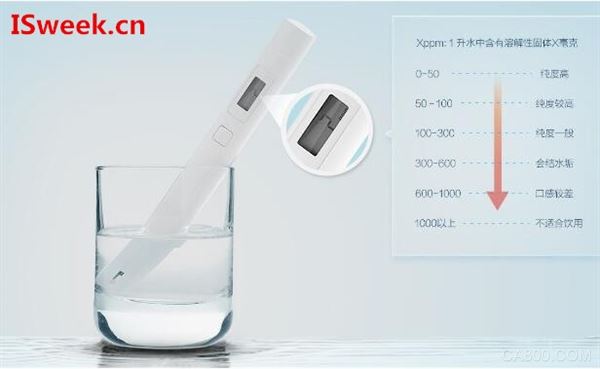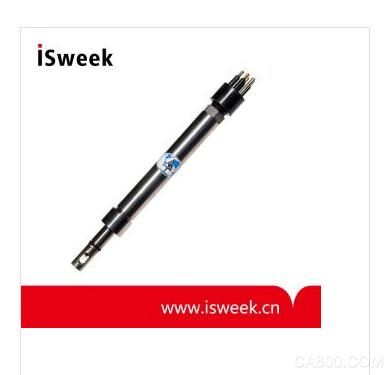The semiconductor technology hydrogen sulfide detector is designed to monitor the concentration of hydrogen sulfide gas in the ambient air. Its measurement range is from 0-20/50/100ppm (adjustable on the job site) of the standard type to 10,000ppm of the high measurement range type. . The product uses solid metal oxide semiconductor sensing technology. The hydrogen sulfide sensor consists of two sheets: one is a heating sheet, and the other is a gas sensor sensitive to hydrogen sulfide gas. Both sheets are mounted on a silicon chip by means of vacuum coating. The heating plate raises the working temperature of the gas sensor to a level capable of reacting to hydrogen sulfide gas. There are metal oxides on the gas sensor, which can dynamically display the change of hydrogen sulfide gas concentration. The sensitivity can range from one part per billion to one hundredth.

The hydrogen sulfide sensor provides users with many output signal options. Multi-channel controllers are based on microprocessors, programmable logic controllers, and microcomputers, and can be applied to any system and network.
The hydrogen sulfide sensor uses an electrochemical H2S sensitive element. In actual measurement, when the sensitive element is exposed to the H2S gas diffused in the environment, the H2S gas diffuses through the filter dust cover through the H2S sensitive element gas permeable membrane and enters the electrode with a constant potential. Under the action of the electrode catalyst, it undergoes anodization reaction with the water in the electrolyte. The electrons released on the working electrode produce a current proportional to the concentration of H2S, which is temperature-compensated by the detection circuit, then converted by the AD converter, and then entered into the single-chip microcomputer to be processed into a frequency (current) signal that is linearly consistent with the measured hydrogen sulfide value and sent to the system. Station, while realizing the local hydrogen sulfide digital display. The hydrogen sulfide signal sent to the substation is sent to the control center station through the communication interface device and the cable to realize continuous real-time monitoring of underwater hydrogen sulfide.
Characteristics of hydrogen sulfide H2S sensor
1. The whole machine is small in size and light in weight
2. Professionally selected imported sensors, which can be equipped with sensors of electrochemistry, catalytic combustion, infrared principles, and thermal conductivity principles
3. High precision: high resolution and fast response
4. Intrinsically safe circuit design, hot-swappable operation is possible
5. Data recovery, eliminating the worries caused by misoperation
6. Automatic temperature and humidity compensation function, accurate calibration at the factory, no need to use calibration
7. Analog voltage or current and serial port colleague output, which is convenient for customers to debug and use
8. The most sophisticated circuit design and manufacturing process, complex production and simple use
9. It can be connected to the computer to communicate and calibrate by itself

Finally, I would like to recommend two hydrogen sulfide sensors in high-quality water quality sensors imported by Gongcai.com from abroad. The first is the hydrogen sulfide sensor imported from German AMT company-H2S. The H2S sensor is based on the principle of electrochemical amperometry and can be used on site. Quickly analyze the dissolved hydrogen sulfide (H2S)/sulfide in natural water. H2S gas diffuses into the sensor through the gas-permeable membrane, and then redox reaction occurs on the surface of the working electrode in the sensor. Quantitative analysis is performed by recording the current signal related to the H2S content. When measuring H2S/sulfide concentration (pH 5-8.5), it is necessary to measure the pH value and temperature value of the sample at the same time, and compensate the output signal of the sensor through the electronic device, so that the measured value can be corrected with the temperature change (temperature compensation) . The sensor can be used for measuring on-site water depth of up to 100 meters, and can also be used for laboratory testing.
The last one is also a water quality sensor imported from German AMT company-H2S. The determination of completely dissolved sulfides (dissolved H2S, HS and S2) is one of the most important parameters for analyzing natural water and wastewater in the industry. Due to the evaporation of toxic H2S, in order to avoid any danger, the concentration of sulfide dissolved in the water must be observed to avoid any danger. H2S can prevent the death of oxygen transport enzymes due to internal focusing. On the other hand, the fully dissolved sulfide concentration is a very interesting parameter for scientists in several scientific departments. They use this parameter to evaluate natural lakes, but it can also be used to understand volcanic activity. However, due to the inconvenient chemical properties of a large amount of hydrogen sulfide, such as high chemical reactivity, it is difficult in the presence of oxygen and rapid concentration exchange between the liquid sample and the gaseous state (mainly air). Although sampling and determination have been very cautious, the results are still uncertain and mostly disappointing. All these shortcomings can be avoided if a new underwater h2s/sulfuric acid-ide detector is used to accurately and reliably determine the depth of the seabed at a depth of 100 meters.
Led Wall Display,Outdoor Advertising Sign Banner,Advertising Digital Signs Banner,Outdoor Signs Banner
APIO ELECTRONIC CO.,LTD , https://www.displayapio.com